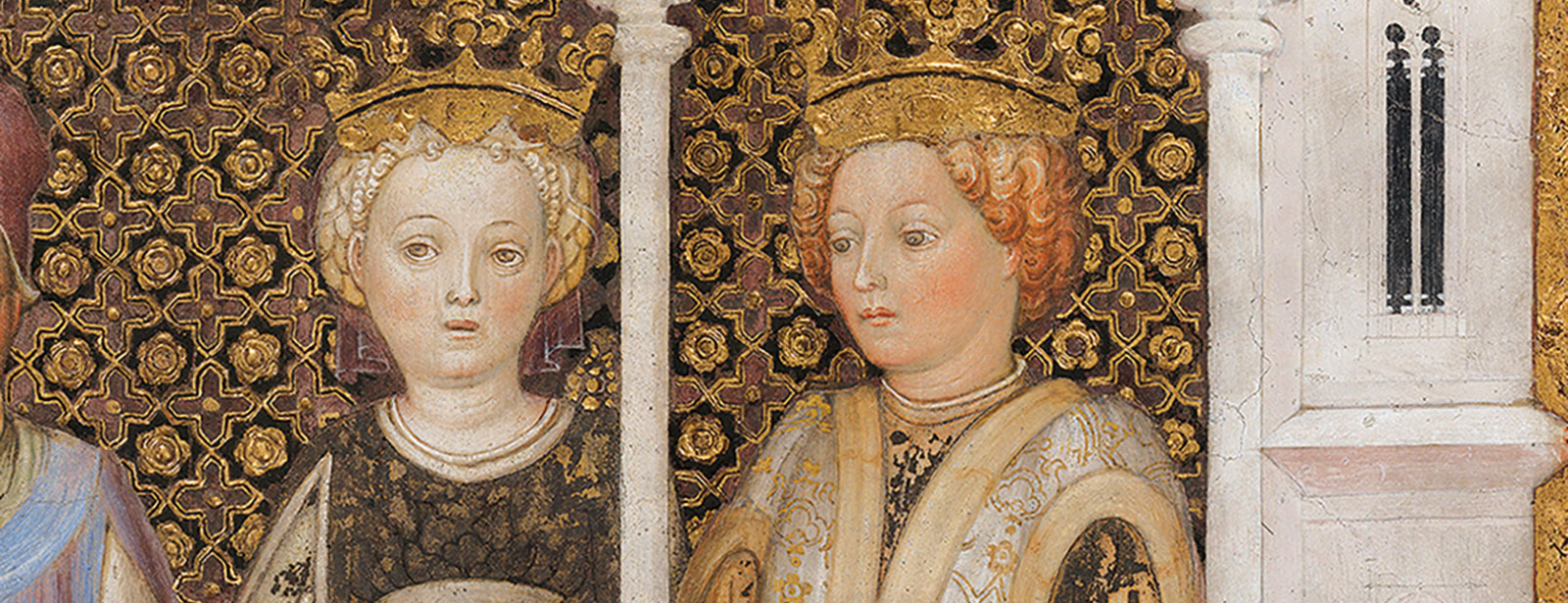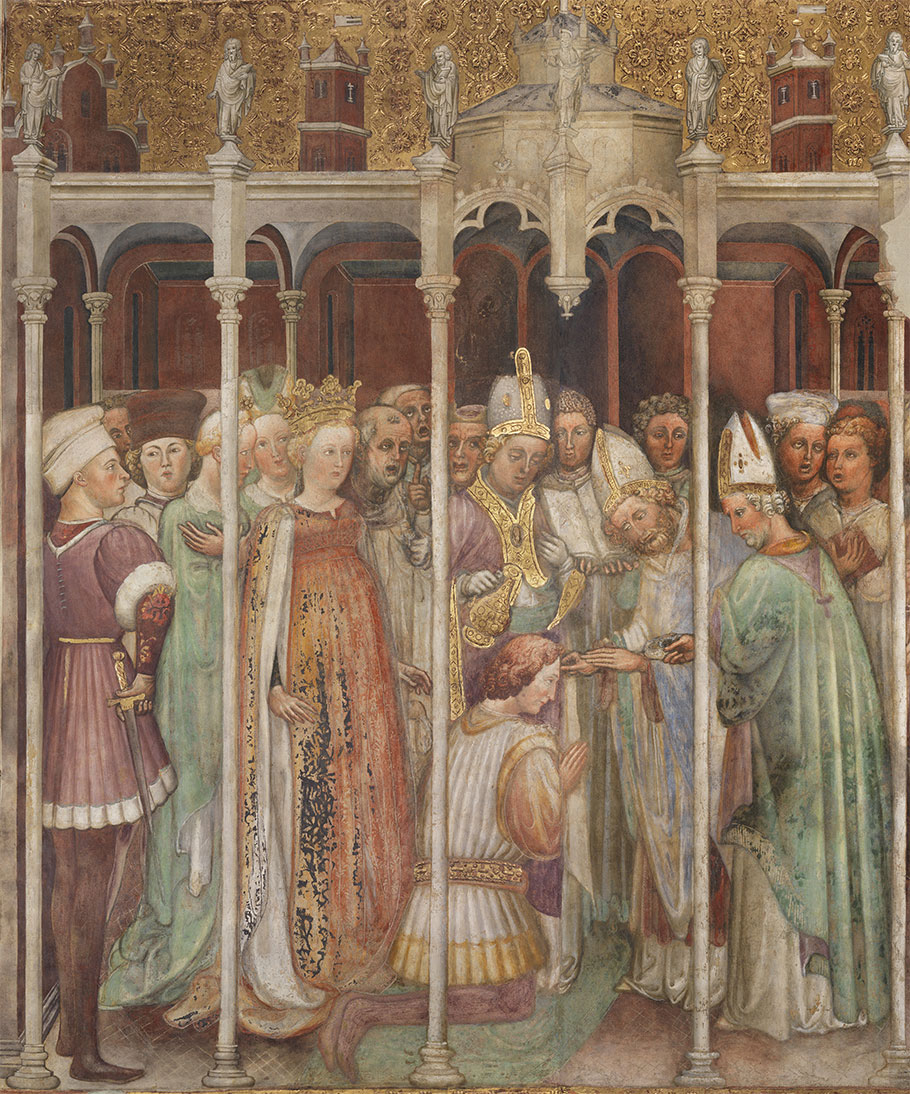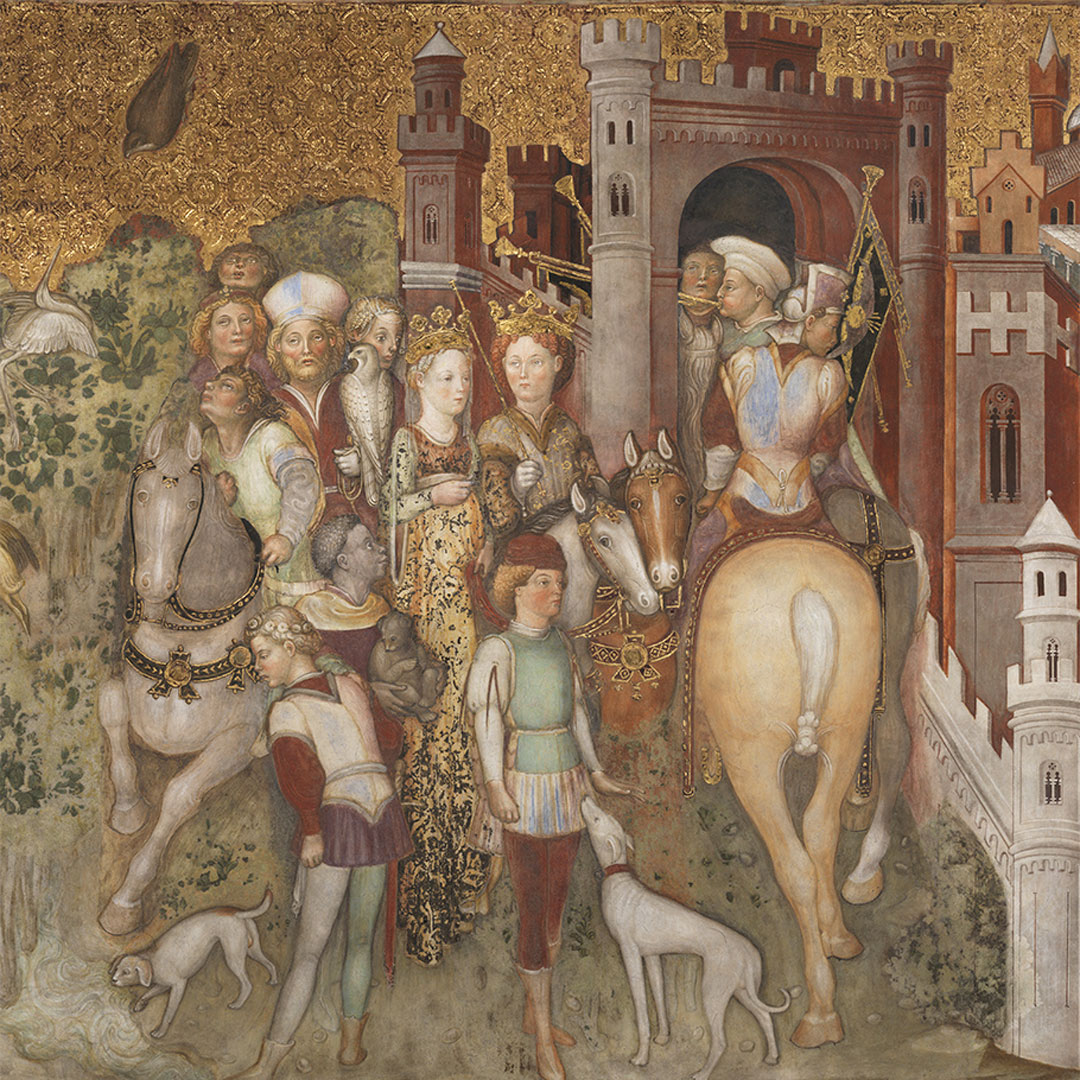Also according to Paul the Deacon, on the death of Autari, Teodolinda had the privilege of choosing a second husband and making him the new king of the Longobards.
The Catholic queen chose the Turingian and Arian Agilulfo, Duke of Turin and a loyal ally of Autari.
The marriage took place in the autumn of 590 in Lomello, near Pavia, and according to a report by Paolo Diacono, later echoed by historian Bartolomeo Zucchi, it was followed shortly afterward by the baptism of the king, who converted to the Catholic faith.
In May 591, in Milan, Agilulfo finally received his royal investiture from the leaders of his people. He then moved the court’s residence to Milan, possibly in an effort to demonstrate a continuity between his authority and that of the Christian Roman emperors, who had made this city the capital of the Western Roman Empire in the 4th century.
In the same context, the choice, also reported by Paul the Deacon, to adopt the titles of “Flavius” and “Agone” should be understood. This decision established a connection with the legendary imperial dynasty of the 1st century AD, aiming to reinforce the legitimizing program of Longobard royal power initiated by Autari.
By Teodolinda’s will, Monza was chosen as the site for the summer residence. The circumstances of this choice were told in legendary terms in the 14th century, in the “Chronicon” by Bonincontro Morigia.
According to the chronicler, the queen intended to build a church in honor of the precursor of Christ, Saint John the Baptist, and by divine inspiration, she had decided to construct it where the Holy Spirit had appeared to her.
The encounter took place around 595: while she was engaged in a hunting trip along the banks of the Lambro River, Teodolinda is said to have stopped to rest in the shade of a large oak tree.
Here, a dove is said to have appeared to her, whispering the word “Modo” (here), to which the queen replied “Etiam” (yes).
According to the legend, at that very spot, she would have then built a palace and the planned chapel, while the fusion of the two words gave rise to the toponym Modoetia, the ancient name of Monza.
Except for the so-called “Longobard Tower,” three early medieval graves found beneath the floor of the current cathedral, and some fragments of a presbyterial railing, nothing remains of these constructions.
What is known is that the palace was decorated with paintings depicting the history of the Longobard people and that the church was endowed with a magnificent treasure, further enriched by the precious gifts offered by Pope Gregory I in 603, on the occasion of the baptism of the couple’s son, Adaloaldo.
Some extraordinary testimonies of the precious jewelry that constituted it have survived to this day and can be admired in the Museum and Treasure of the Cathedral.
In any case, from 590 and for the next 25 years, the history of the Longobards was conditioned and dominated by the actions and personality of Agilulfo and Theodolinda, whose union was blessed by the birth of two children: a daughter, Gundeperga, born around 600, who, like her mother, would become queen of the Longobards twice, first as the wife of King Arioaldo (626-636), then of Rotari (636-652); and a son, Adaloaldo, born in 602 and associated with the throne in 604, after being baptized with the Catholic rite in 603 at the church of Monza by Teodolinda’s advisor and Bishop of Trento, Secondo of Non.
Both the baptism and the association of Adaloaldo with the throne were decisive events in the political and religious strategy of the royal couple.
During their reign, Teodolinda and Agilulfo worked in perfect harmony to realize Autari’s vision of transforming a disordered mass of barbarian warriors and subjugated Italians into a pacified people, organized into a solid state with a national scope, supported by a hereditary royal dynasty.
The merits and role played by the queen in this operation are scant, but of great significance, as evidenced by contemporary sources. One such testimony is a letter from the end of 598, in which Pope Gregory the Great (590-604), recalling the “commitment and goodness” with which Teodolinda had worked to promote peace between the Longobards and the Byzantines, urged the queen to take “all necessary steps” with Agilulfo “so that he would not abandon the alliance with the Christian Empire.” He also invited her “to favor everything that could benefit both sides,” as had always been the queen’s custom.
Indeed, serious difficulties and obstacles characterized the first decade of the reign of Agilulfo and Teodolinda, marked on the external front by the continuous plots of the Franks and Byzantines to overthrow their dominion in the peninsula, and on the internal front by the rebellion of various dukes who were reluctant to recognize the authority of the sovereigns. As a result, they were forced to operate in a perpetual state of war, engaged on multiple fronts.
And if the betrayal of the Lombard dukes was resolved in 595 with the defeat and execution of the rebels, in relations with the Franks, Agilulfo proceeded along the path of Autari’s legacy, establishing a truce that was renegotiated multiple times. This allowed him to concentrate his forces in the peninsula, where in 591 he launched a triumphant expansion campaign southward. Gradually, he began to occupy large Byzantine areas in Veneto, Emilia Romagna, Umbria, and Tuscany, reaching the outskirts of Rome, whose conquest was only avoided by the diplomatic efforts of Pope Gregory the Great, supported by Teodolinda.
Among the causes that made the situation delicate, a prominent role was played by religious conflicts.
The opposition between the occupiers and the occupied was indeed exacerbated by the division between the Roman Catholics and the Arian Longobards; a division made more complex by the spread of the Three Chapters Schism, which had separated the two main episcopal sees of northern Italy, Milan and Aquileia, from Rome.
In this climate, Teodolinda chose to remain faithful to the Three Chapters obedience, to which the Milanese diocese adhered, thus demonstrating her ability to fully assess the situation in which she was operating.
In this way, the queen ensured a sort of neutrality between the Roman papacy and the Lombard aristocracy, positioning herself as someone who, standing above the factions, aimed only to protect the higher interests of the people and the Kingdom.
It is not unlikely that the foundation of the Basilica of San Giovanni Battista in Monza represents a significant moment in the queen’s religious policy.
Built within the boundaries of the diocese of Milan, which was then dominated by the Aryan Lombard faction due to the exile of the Catholic bishops to Genoa (who had since returned to Roman obedience), the church in Monza was established as a royal institution subordinate to the Patriarchal Rite. This demonstrated a certain independence from both Milan and Rome. However, the clear intent behind this, as evidenced by the queen’s correspondence and actions, was a gradual rapprochement with the Pope, aimed at promoting a peaceful coexistence, both religious and political, between the Lombard and Italian populations.
This gradual rapprochement is certainly reflected in the decision to baptize Adaloaldo with the Catholic rite, almost as a way to ensure, through the person of the future sovereign, the natural triumph of this profession of faith among the Lombard population, thereby facilitating its integration with the Roman population.
In the same vein, the initiatives launched by the court should also be understood: during the reign of Agilulfo and Teodolinda, in fact, much of the property that had been seized from the ecclesiastical authorities was returned, many bishops were able to return to their dioceses, and churches and monasteries were restored.
The royal couple also supported the monastic reform of Saint Columbanus, granting the Irish monk lands and properties for the foundation of the Bobbio Monastery in 612, near Piacenza. This soon became one of the most important monasteries of medieval Europe, as well as a center for spiritual influence and the conversion of the Longobards to Catholicism.









